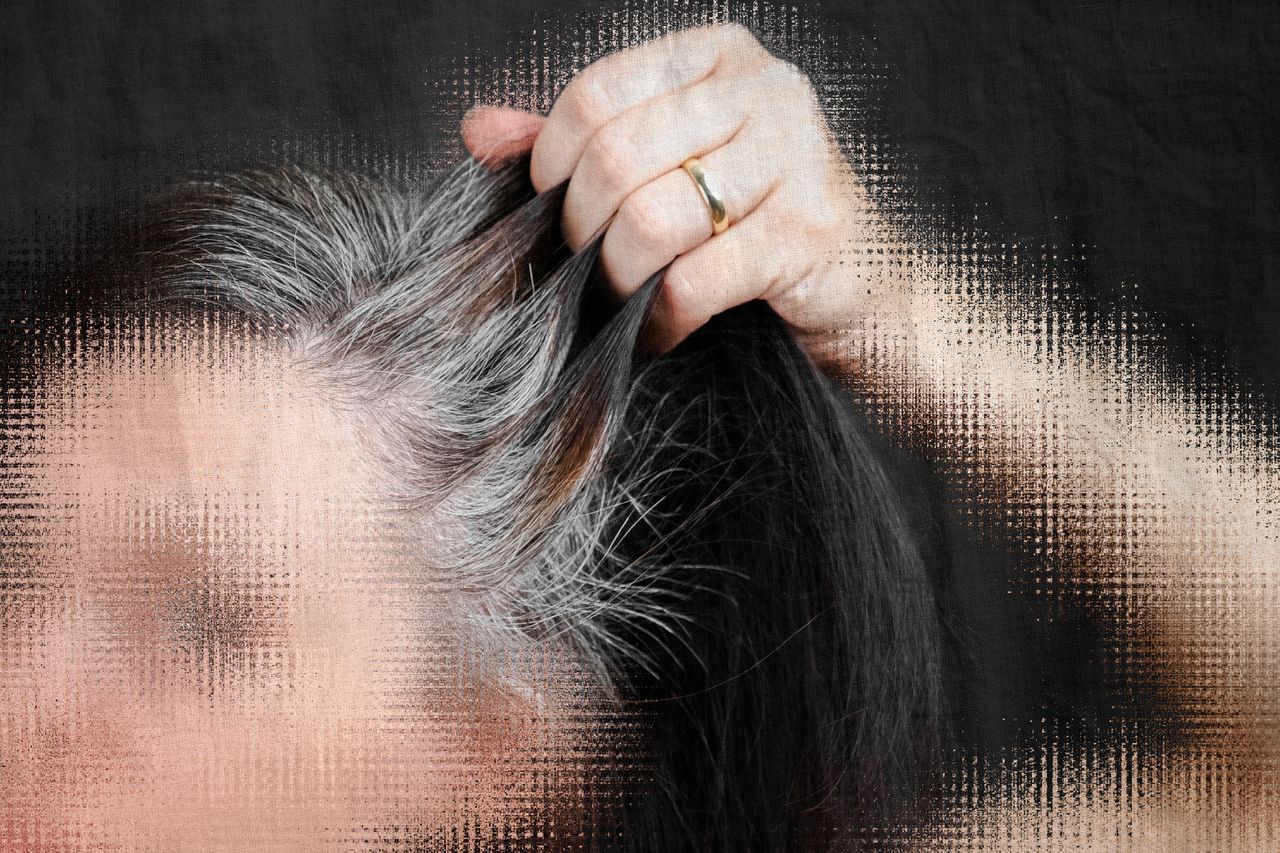Gray hair? Nope. Not doing it, says Emily Cahill. Not at 30 years old.
“In my soul I feel 25. With the gray hair, it feels wrong,” says Cahill, a health coach in Austin, Texas.
Though her soul is barely old enough to rent a car without a surcharge, Cahill’s scalp started sprouting grays in her early 20s. She sees the silvery strands as a sign that something is amiss. And she bristles at the notion of a lifetime of time-consuming and costly hair-coloring.
So she’s trying a different approach, joining the many people chasing remedies to try to banish grays in other ways — and maybe stop them altogether.
Cahill has tried fo-ti, an herbal supplement used in traditional Chinese medicine for hair health, and the dietary supplement spermidine, which has delayed age-related diseases in mice . She meditates daily to manage the stress she suspects accelerates her graying, and she bought a red-light therapy helmet .
Sure, many people chose to ditch the dyes and rock their grays during the pandemic. Celebrities including Tan France and Jamie Lee Curtis wow with their silver locks.
Yet, one-third of U.S. adults said they would probably or definitely take a drug to prevent or reverse graying if such a medication were approved, according to an October YouGov poll of 9,000 people.
Some endorse gobbling black sesame seeds and blackstrap molasses to give gray hair the brush off. Others take liquid chlorophyll or douse their hair in onion juice. In Facebook and Reddit forums, posts about reversing grays can draw hundreds of replies.
Rosamaria La Posta, a 31-year-old singer-songwriter in Montreal, takes copper supplements that she suspects are fixing her grays. “I’m too young to be old,” she says.
In Las Vegas, Navy veteran Natasha Johnson can commiserate.
“ It makes you look older and closer to death,” says the 50-year-old. “It looks beautiful on a lot of women, just not on me.”
Johnson swears by fo-ti, which in her estimation has significantly reversed her graying. “Even when I was deployed in Afghanistan, I took it.”
Her friends are skeptical. “I tell everybody to take it,” she says. “They don’t believe it.”
It’s a gray area
There is no proven way to stall or reverse graying, say dermatologists, who advise being careful about taking substances with unclear benefits and potentially adverse side effects. Taking too much fo-ti, for example, could cause liver damage .
Still, some researchers of aging say anti-gray warriors might be onto something.
Melissa Harris, a stem-cell and pigmentation biologist at the University of Alabama at Birmingham, is testing a compound that appears to reverse hair graying in mice. Her lab is also exploring how dormant stem cells could be harnessed to restart the “factories” in hair that produce pigment.
These factories contain specialized melanocyte cells that make the pigment melanin, and stem cells to replenish the melanocytes. When these cells malfunction with age, hair loses its color. “It’s pretty inevitable,” Harris says.
Smoking and stress can accelerate graying . A 2021 study found that people’s gray hair recovered its color after periods of less stress. “One participant reversed their hair graying after a two-week vacation,” says co-author and neuroscience researcher Ayelet Rosenberg, who was a research assistant at Columbia University at the time of the study.
Caucasians tend to start graying in their mid-30s, while people of Asian and African ancestry typically do so in their late-30s and mid-40s, respectively, says Dr. Delila Foulad, a dermatologist at UCLA Health.
Graying much earlier could signal an underlying medical problem or nutritional deficiency. But for most people, it is a normal process that doesn’t need fixing, says Dr. Jenna Lester, a dermatologist at the University of California, San Francisco. “We frame a lot of things as problems that aren’t,” she adds.
Still, humans have been trying to chase away gray for millennia. Clay tablets from the Assyrian Empire dated to the 7th Century B.C. mention using the gall of a black ox, cypress oil, licorice and honey to turn gray hair black. Ancient Egyptians applied oil cooked with the blood of a black calf, according to the 3,500-year-old Ebers Papyrus . (Presumably, if it worked, we’d still be trying it).
Tech entrepreneur Bryan Johnson, who is spending millions experimenting on himself to slow aging , posted a YouTube video last month, detailing his regimen to reverse hair loss and graying ; the video has nearly 700,000 views.
Johnson, 46, uses two topical treatments. One contains an herbal extract that, Johnson acknowledges, has colored his hair. But he says something is reversing his grays. When he has looked closely at plucked hairs, he says color has returned to some of them.
What is working? He isn’t sure. Johnson’s routine also includes more than 50 supplements daily and trips to a Honduran island for $25,000 gene-therapy injections.
Jon Vlachogiannis, a 42-year-old tech investor and self-professed biohacker in Los Angeles, purchased one of the topical treatments Johnson recommended.
“People are touting this as the best thing since sliced bread,” he says. “I wanted to see what happens if you actually try it out.”
Vlachogiannis applied the treatment to his scalp every day for a week and didn’t wash his hair, as instructed. His hair got darker. He thought it was working. But then he shampooed his hair.
“The color hadn’t changed,” he says. “It was the oil from my hair.”
Devin Feher, 37, has been experimenting for years with potentially life-extending strategies. It was going well, Feher says, until the grays began sprouting.
“I started freaking out. I’m not slowing it down enough if I have gray hair,” says Feher, a ride-hailing driver in West Palm Beach, Fla. “I stepped up my interventions a whole lot after that.”
Among the strategies is taking 60 pills a day, including rapamycin, an immunosuppressive drug that some researchers think could extend healthy lifespan . Feher thinks rapamycin has helped to slow graying. “It’s doing something that you can notice.”
Dr. Ralf Paus, a dermatologist at the University of Miami, is testing whether rapamycin and other compounds could reverse gray hairs. Lab experiments have shown promising results, he says, and he thinks there soon will be proven ways to de-gray.
But rapamycin can cause side effects including increasing the risk of infections and shouldn’t be used willy-nilly until more research confirms its safety and efficacy for reversing grays, according to doctors. “It’s irresponsible to make yourself a guinea pig,” says Paus.
Cahill, the health coach in Texas, says her hair is thicker and that some of her grays have regained color since she started her ministrations. “Believing it’s possible is the most important thing,” she says.
Write to Dominique Mosbergen at dominique.mosbergen@wsj.com



